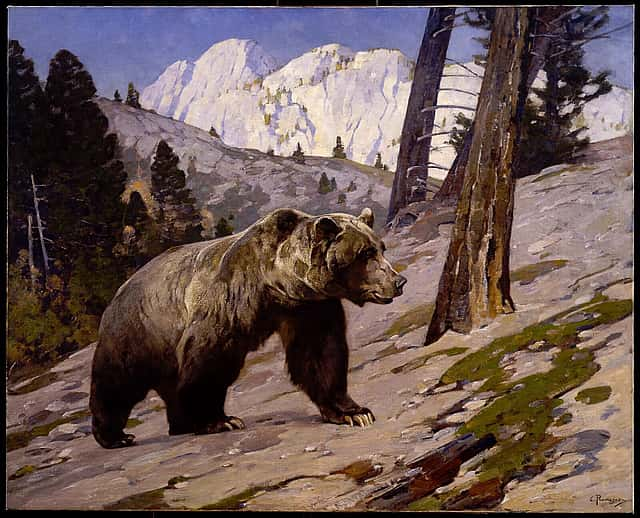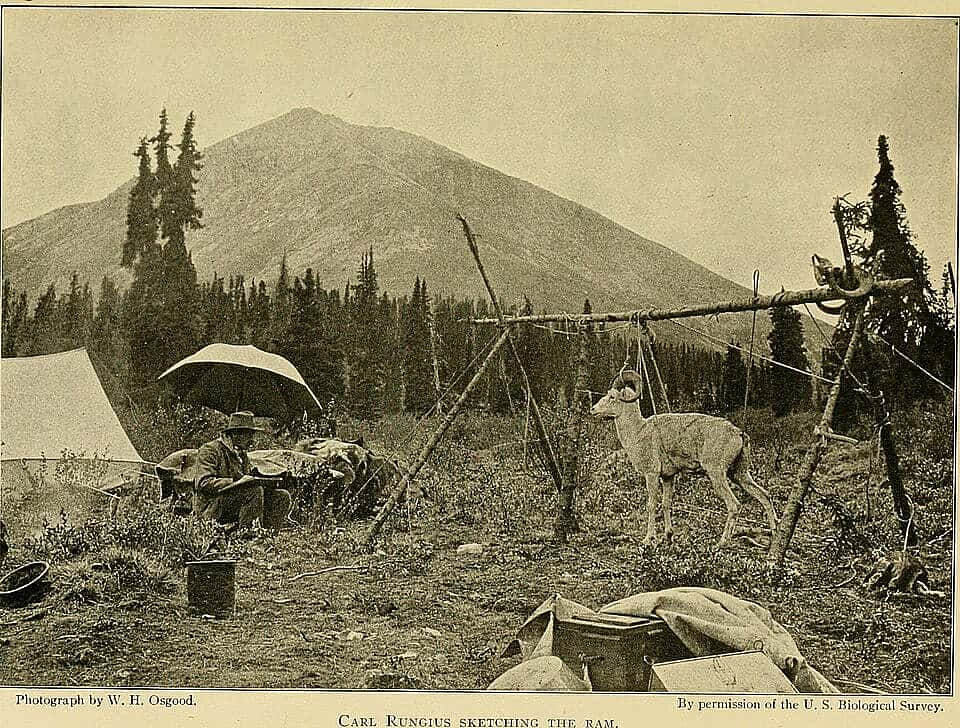
Carl Rungius and the Silver-Tipped Grizzly: A Legacy in Western Wildlife Art
A silver tipped grizzly lives in the Whitney Western Art Museum at the Buffalo Bill Center of the West. No cause for alarm—he is two dimensional and hangs on the wall as a gift from the Jackson Hole Preserve. Painted in 1923, this oil on canvas grizzly bear comes from the imagination of renowned wildlife artist Carl Rungius (1869-1959).

Early Life and Influences
Born in Germany in 1869, Rungius (pronounced ROON-gis) immigrated to the United States in 1896 after studying at multiple European art academies. Popular literature of the time provided Rungius with a romanticized vision of the American West, perhaps fueling his yearning to see it first-hand. Inspired by European impressionists, Rungius desired to paint wildlife realistically, in its natural environment. Combining wildlife and natural landscape in art seemed relatively unheard of in the early 20th century and made Rungius’s artwork quite unique. The absence of people in his paintings and his emphasis on the untouched wilderness became hallmarks of Rungius’s work.
Wyoming: Discovery and Inspiration
Rungius developed strong ties to Wyoming over the years, first visiting in 1895 and staying for five months. So enamored with the U.S., he immigrated here soon after, immersing himself in the North American wilderness. He returned to Wyoming annually to study and sketch the wildlife and landscapes, staying at the Box X Ranch in Cora each time. Rungius painted several of his finest works in Wyoming while also creating illustrations for hunting and naturalist publications.
From Naturalism to Impressionism
Rungius’s early work focused heavily on details in his paintings, giving them a more naturalistic appearance. As his artwork progressed and matured, his paintings looked somewhat impressionistic, focusing more on shapes and simple color palettes. He would take frequent hunting/sketching excursions and used photography to capture poses, sometimes even sketching wild game before quartering it in camp. Prominent wildlife artist and devoted student of Carl Rungius’s work, Tucker Smith of Jackson, Wyoming explains that “[Rungius] was definitely a hunter, but then he used the animals that he hunted to eat, and also for studying how they looked. He would prop them up in different poses in camp so he could get studies from different angles of them; and that was the only way to get them to stand still.”[1]

The Rungius Legacy in America
As the first career wildlife artist in America, Carl Rungius helped define the aesthetic of the American wilderness, making animals worthy subjects of fine art—a revolutionary idea at the time since the prevailing mindset viewed wild animals as dangerous creatures to avoid. Instead, Rungius featured them in his paintings. This had a profound influence on how the public perceived the American West. And, according to Tucker Smith, “There’s nobody who can duplicate [Rungius’s] painting technique.”[1]
So, about that silver tipped grizzly hanging in the Whitney. This painting embodies Rungius’s powerful portrayal of big game animals. Few animals rival the majestic, striking presence of a fearsome yet noble grizzly bear with frosted silver on the tips of his hairs—a visual detail depicted meticulously by Rungius’s paintbrush, giving the spectator a bold representation of dramatic naturalism that celebrates and honors the untamed spirit of the West.
[1] Bisoncast: The Rungius Legacy, Part II, directed and produced by National Museum of Wildlife Art, YouTube video, 15:30, posted by National Museum of Wildlife Art, July 7, 2024, https://youtu.be/DC6vXn57Iwc.
Written By
Jane Gilvary
Jane Gilvary is a Content Specialist in the Public Relations Department at the Center of the West. She writes and manages web content and serves as editor of the Center’s monthly e-newsletter, Western Wire. Outside of work, Jane enjoys exploring Wyoming’s backcountry and discovering its hidden treasures.
